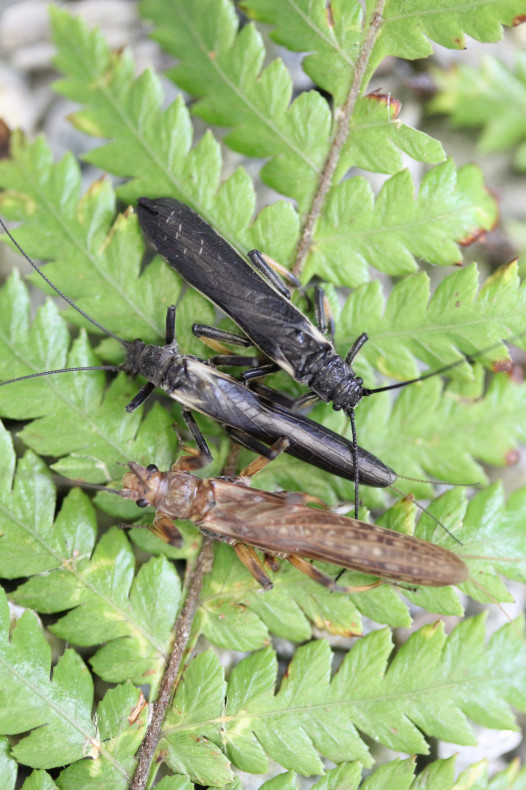Research
Published 5 November 2024Human actions cause insect colour change
New Zealand’s native stoneflies have changed colour in response to human-driven environmental changes, new research shows

Dark coloured Zelandoperla stoneflies (middle) mimic the poisonous Austroperla (top), which are abundant in forests. Recent forest clearance has eliminated Austroperla from many regions of NZ. In response, Zelandoperla populations have quickly evolved lighter colouration (bottom).
Just published in the journal Science, the University of Otago study provides arguably the world’s most clear-cut case of animal evolution in response to change made by humans.
Co-author Professor Jon Waters, of the Department of Zoology, says the stonefly has become a different colour due to recent deforestation.
“In natural forested regions, a native species has evolved ‘warning’ colours that mimic those of a poisonous forest species, to trick predators into thinking they are poisonous too.
“But the removal of forests since humans arrived has removed the poisonous species. As a result, in deforested regions the mimicking species has abandoned this strategy – as there is nothing to mimic – instead evolving into a different colour.”
Scientists have long wondered whether humans are causing evolutionary changes in natural populations.
The most well-known example of evolution caused by humans was the peppered moth population in the United Kingdom, which changed colour in response to industrial pollution in the 1800s.
But Professor Waters says even that case has been considered controversial.
This new study shows how humans have changed the way native species interact.
Co-author Dr Graham McCulloch says humans have disrupted ecological interactions between species that evolved over millions of years, but some of our native species are resilient enough to overcome this.
“This study is important because it shows that, at least for some of our native species, there is the possibility of adapting to the environmental changes caused by humans, even when the change is rapid,” Dr McCulloch says.
“It also shows that independent populations have undergone similar changes in response to deforestation – there have been similar shifts independently in different parts of the species’ range – showing that evolution can be a predictable process.”
Additional information: University of Otago press release
RESEARCHER
Professor Jon Waters
ORGANISATION
University of Otago
FUNDING SUPPORT
Marsden Fund Standard grant
CONTRACT OR PROJECT ID
UOO2213 "Adapting to NZ's deforested ecosystems: testing for human-driven shifts in insect colour"
